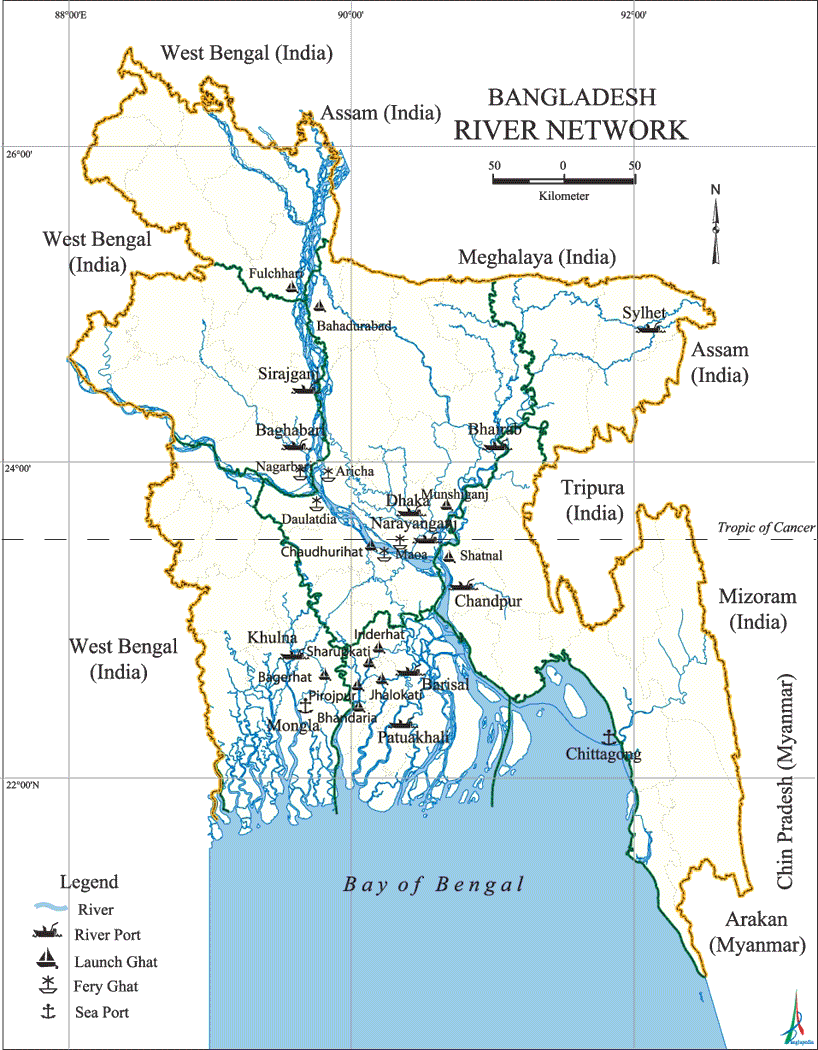Info
Main Rivers of Bangladesh
Bangladesh lies at the apex of the Bay of Bengal with rivers flowing down from the surrounding countries. Nearly the whole area of the country consists of low and plain lands 24,000 km long network of inland waterways. Three major river systems and their confluence form the world’s largest delta. Bangladesh has about 9,000 sq km of territorial waters with about 720 km long coast line and about 20,000 sq km of Economic Resources Zone (ERZ) in the sea. About two-thirds of the land is vulnerable to flooding and most areas remain under water for two to five months in a year. As a result, costs of development and maintenance of roads and railways are comparatively higher. On the contrary, inland water transport has always been a natural and relatively cheap means of transport in Bangladesh. In certain areas, it is the only mode of transport. Including the country’s unclassified routes, the total length of waterway (700 rivers) is about 13,000 km. Of the total waterway, 8,433 km is navigable by larger vessels in the rainy season (5,968 km of which is classified for navigation), reducing to about 4,800 km in the dry season (3,865 km of which is classified).
The number of launches and steamers registered with the Inland Water Transport Authority (IWTA) in 1970 was 2,712. The government has a pool of water transport vessels under its own agency, the Inland Water Transport Corporation, which on average, carries 1.3 million passengers, 45,000 tons passenger cargo and 1.3 million tons unaccompanied cargo in a year. Launches, steamers and ships registered with the IWTA of Bangladesh annually carry about 80 million passengers and 6 million tons of cargo. Until the beginning of 1990, the ferry services of the corporation annually transported 3.5 million passengers and the figure on this count had significantly gone down after construction and opening of the large bridges like the Daudkandi Bridge, the Meghna Gomati Bridge and the Bangabandhu Jamuna Multipurpose Bridge.
Bangladesh Shipping Corporation is the main agency operating with ocean going vessels. The first vessel with which the corporation started operation was the Banglar Dut. By 1978, the corporation owned 22 with a total carrying capacity of 306,806 tons. Ever since the corporation did not gain much in the number of vessels or in terms of cargo carried. It has now 36 ships with a capacity of 405,845 MT. Bangladesh, however, gained in both of the number of sea going vessels and the carrying capacity after the private sector was allowed to join in the business. Chittagong and Mongla are the only two seaports of the country carrying out over 80% of the exports and over 95% of the imports through sea routes.

